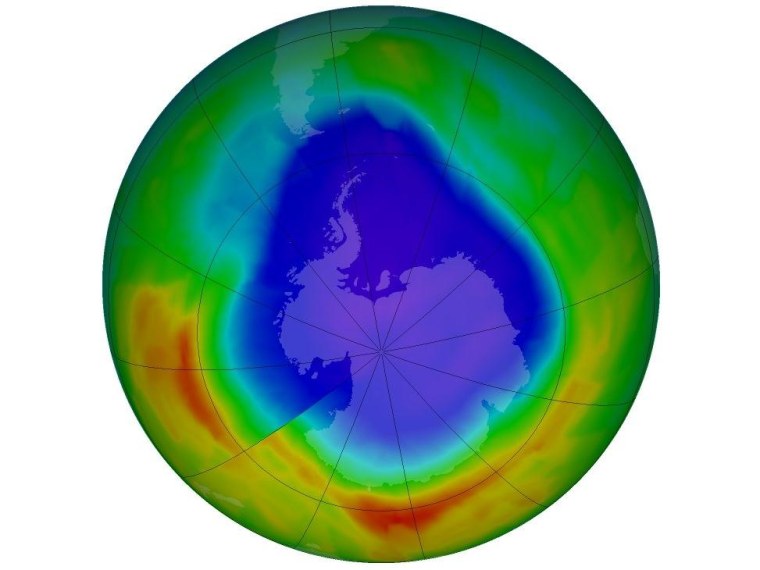OSLO, Norway — Scientists have detected four new industrial gases that damage Earth's protective ozone layer, despite bans on almost all production of similar gases under a 1987 treaty.
Tiny traces of the gases were found in Greenland ice cores and in air samples from Tasmania, researchers reported Sunday in the journal Nature Geoscience. Experts are working to identify the sources of the chemicals, which may have been used to make pesticides or refrigerants.
The ozone layer shields the planet from damaging ultraviolet rays, which can cause skin cancer and eye cataracts, and has been recovering after a phase-out of damaging chemicals under the United Nations' 1987 Montreal Protocol.

Three new types of chlorofluorocarbons, or CFCs, were reported, plus one type of hydrochlorofluorocarbon, or HCFC.
"The concentrations are not yet a threat to the ozone layer," lead author Johannes Laube of the University of East Anglia in England told Reuters. In total, the scientists estimated more than 74,000 metric tons of the four had been released to the atmosphere. That is only a small fraction of the million metric tons of CFCs produced every year at a 1980s peak, according to the team of scientists in Britain, Germany, Australia, France, the Netherlands and Switzerland.
The Greenland ice cores indicate that none of the gases was present before the 1960s.
Laube said it was unknown if the emissions of the new gases were illegal, since the Montreal Protocol has some exemptions. "We hope to tighten the loopholes," he said.
One of the newly discovered CFCs was worrying since concentrations were rising fast, Laube said. The gases were detected earlier in Greenland than Tasmania, indicating they were produced in the northern hemisphere and then blown south. Research planes, taking air samples around the world, may be able to find the sources, Laube said.